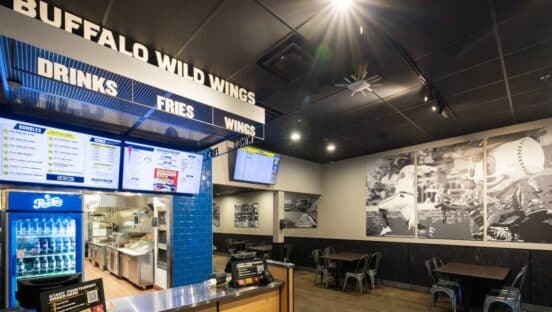When asked for the most threatening pests in the foodservice industry, rodents always make the list. In fact, 20 percent of the world’s food is believed to be contaminated by rats and mice. During the cold winter months, rodent activity increases as these pests seek shelter in warm areas with readily available food and water. Sound familiar? Your restaurant is the perfect winter hideaway for rodents such as house mice, Norway rats, and others.
With 20 percent of restaurant health inspection scores centering on pest control, restaurateurs
cannot afford to not have a plan in place for avoiding rodent issues. Often, mere evidence of a live rodent (e.g. droppings and not actually seeing the rodent itself) in a food environment can force a shutdown until the issue is resolved. Between the lost business during closing and the devastating reputational damage, rodents are not to be underestimated.
But with a diligent eye and a strong plan in place, you can help protect your business and hard-earned reputation by keeping rodents both out of the picture and out of your online reviews. Here are four steps for avoiding rodents like the plague.
1. INSPECT, INSPECT, INSPECT
There are two key factors to proper inspection—identifying rodent hot spots and knowing what to look for. Stored product areas, cluttered offices or back rooms, behind and under kitchen equipment and in wall, floor and ceiling voids are some of the most common spots for rodents to nest or use as runways to food.
In rodent hot spots, look for capsule-like pellet droppings and chew marks on packages, walls, insulation and wiring. Another sign of rodent activity is grease or rub marks along walls—this is from their fur rubbing against the material as they scurry past. Additionally, rodents often make nests of shredded material such as paper and cloth. These can be found in roofs, attics, wall voids and other reclusive places. Outside your restaurant, inspect for burrows along the side of your foundation and near areas where trash is placed.
2. KEEP THEM OUT
Did you know rats can fit through holes the size of a quarter? Mice can even fit through holes the size of a dime. It’s crucial to seal off any potential entry points by installing door sweeps, sealing cracks and eliminating gaps around utility lines. You should also be aware of what’s above you—roof rats can enter your establishment through low-hanging tree limbs that contact the building.
And don’t let someone else’s mistake affect your business—ensure that packages and products are inspected for rodent warning signs before being brought into your business. Is there a hole in a shipment box? Does there appear to be chew marks on a can? If so, refuse the delivery and notify your supplier immediately. Better safe than sorry.
3. KEEP IT CLEAN
This should go without saying, but one of the best ways to help prevent pest issues is to keep a clean establishment. Repair any leaky sinks, equipment or ice machines as soon as possible, as rodents are attracted to moisture. Clean food spills and debris immediately, and have an established cleaning process for the beginning and end of each shift. Never leave dirty dishes or full trash receptacles overnight. Don’t forget about de-cluttering your office space and storage closets—these areas are often overlooked by restaurateurs, but clutter can help mask the warning signs of pest activity.
4. EDUCATE YOUR STAFF
Just like running an effective restaurant, pest management is not a one-person job. Your employees are your first defenders against pest issues—they’re often the ones in a position to find warning signs. And if they know what to look for and who to tell, you can put a stop to the issue long before it becomes one to your customers. Talk to your pest management professional about staff training, as most providers offer this at no charge. With everyone on board to help keep your restaurant pest-free, you can help prevent small issues from developing into infestations.
Nobody likes a rat, but understanding these four steps can help you and your staff defend against this filthy pest. Keep an open dialogue with your pest management professional about concerns you have and remember to always monitor your results so that you know what is and what isn’t working for you. A strong plan and an even stronger team will help keep your restaurant free of rodents and your reputation squeaky clean.












